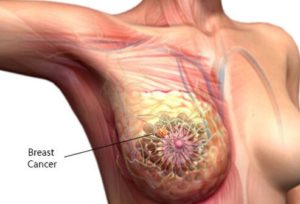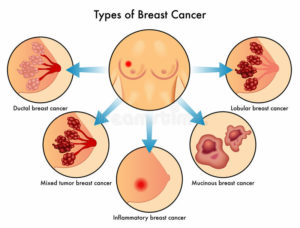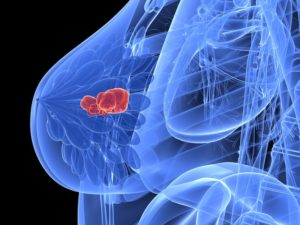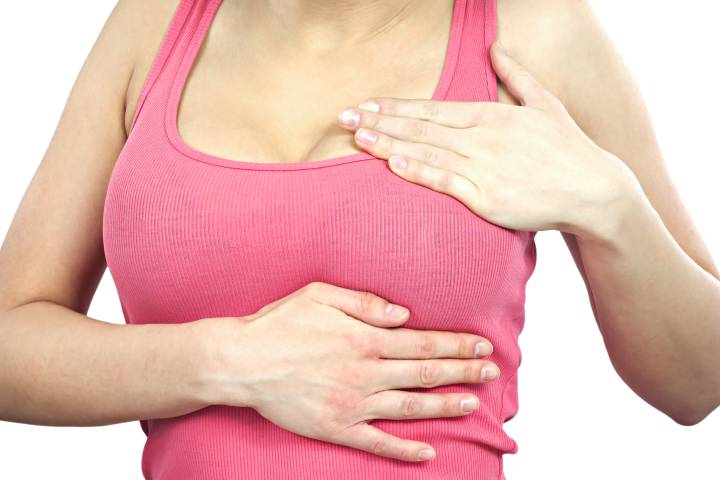Breast cancer is a disease in which malignant cells form in the tissues of the breast. It’s so common that 1 in 8 women in the United States will be diagnosed with breast cancer in their lifetime. In fact, it’s one of the most commonly diagnosed cancers in women. Take a look below for 25 more important and scary facts about breast cancer.
1. Each year, it’s estimated that over 252,710 women in the United States will be diagnosed with breast cancer and more than 40,500 will die.
2. It’s the second leading cause of cancer death among women.
3. Even though breast cancer in men is very rare, it’s estimated that 2,470 men will be diagnosed with breast cancer and about 460 will die each year.
4. On average, every 2 minutes, a woman is diagnosed with breast cancer and 1 woman will die of breast cancer every 13 minutes.
5. Over 3.3 million breast cancer survivors are alive in the United States today.
6. Most women who get breast cancer don’t have a family history of the disease.

7. While there has been a lot of progress made in breast cancer treatment and research, more work is left to be done. In fact, after skin cancer, breast cancer is the leading cause of cancer death in women.
8. As a woman ages, the risk of breast cancer goes up significantly. Most breast cancers are found in women who are about 55 years or older.
9. In the 1970s, breast cancer risk was 1 in 11, while today it’s 1 in 8. This is largely due to the longer life expectancy and more detecting through screening. Other factors can include menopausal hormone use, changes in reproductive patterns and the increased prevalence of obesity.
10. Due to new treatments and early detecting, the 5 year survival rate for women with breast cancer is about 90%.
11. About 5% to 10% of breast cancers can be traced back to specific, inherited gene mutations, such as the BRCA1 and BRCA2 gene mutations.
12. BRCA mutations are rare in the general population, with less than 1% of the population having them.
13. On average, 55% to 65% of women who inherit a harmful BRCA1 mutation and around 45% of women who inherit a harmful BRCA2 mutation will develop breast cancer by the age of 70.
14. Women who have the BRCA1 or BRCA2 gene mutation are much more likely to be diagnosed with breast cancer at a younger age, as well as developing cancer in both of their breasts.
15. Women who are of Ashkenazi Jewish heritage are at a much higher risk of having BRCA mutations. The United States Preventive Services Task Force recommends that women of Ashkenazi Jewish heritage be tested for the BRCA mutation and have regular check ups for breast cancer.

16. While non-Hispanic white women have higher rates of breast cancer incidence, African American women have higher incidence rates before the age of 40 and are more likely to die from breast cancer at every age.
17. Women who have dense breasts, meaning that there is more glandular and fibrous tissue and less fatty tissue, on mammograms, have a risk of breast cancer that’s about 1.5 to 2 times that of women with average breast density.
18. Women who have had more menstrual cycles due to having started menstruating early or women who have went through menopause later in life, have a slightly higher risk of breast cancer. This is likely due to a longer lifetime exposure to the hormones estrogen and progesterone.
19. Recent research has suggested that breastfeeding for a year or more slightly reduces overall risk of breast cancer. In fact, there’s about a 4.3% reduction for every 12 months of breastfeeding. Researchers believe that this is because breastfeeding interrupts periods, meaning fewer menstrual cycles and less estrogen exposure. Others suggest that the lower risk can be due to structural changes in the breast after lactation and weaning.
20. The American Cancer Society recommends that women should have the choice of starting their annual breast cancer screenings with mammograms at the age of 40.
21. Herceptin is a breast cancer smart drug which can trace its roots back to the City of Hope. Scientists there have developed human proteins that led to monoclonal antibodies, which is the basis of many cancer drugs.

22. A 2017 JAMA study found that in the United States, younger women with breast cancer are increasingly doing double mastectomies, even if they were diagnosed with early stage cancer in only one breast.
23. In some states, over 42% of women between the ages of 20 and 44 who have underwent surgery between 2010 and 2012 have opted to remove both breasts with a CPM; which is a procedure to remove the healthy breast along with the affected breast.
24. Exercise reduces breast cancer risk for women of all body types, even women who are already lean.
25. Exercise is also beneficial to breast cancer survivors. However, a recent study found that only a third of breast cancer survivors meet the recommended activity levels.





One Comment
Pingback:
January 13, 2018 at 3:42 pm